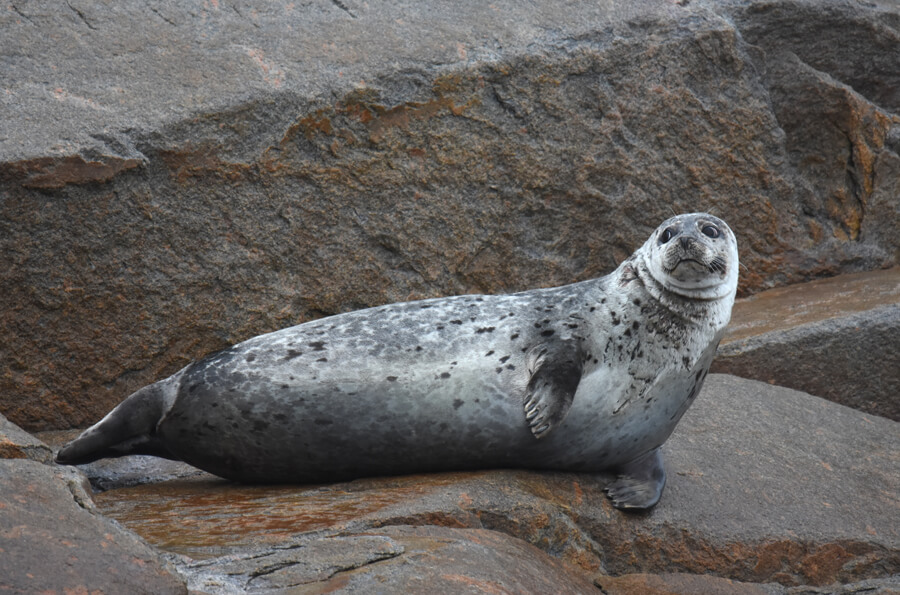The extreme weather of the past few days has not been very conducive to marine observations. In addition to repeated snowstorms that severely hampered visibility, large waves have pounded the coast. How do waves form? Strong, sustained winds form the swell, which, when approaching the coasts, transforms into waves. The shape, strength and height of the waves will vary according to the topography of the seabed and the wind.
Did the strong winds and the ice beginning to form near shore cause all the large rorquals to leave? On November 19, one observer still noted the spouts of three humpbacks opposite her home in Cap-des-Rosiers. Since then, not a trace of whales.
Since November 18, the tag placed by the Mingan Island Cetacean Study (MICS) and Fisheries and Oceans Canada on the blue whale B351 has stopped emitting positions. The most recent data received placed the animal near the southeastern tip of Anticosti Island. New tags will be applied next summer in the hope that they will post positions longer and shed additional light on blue whale migration patterns.
While eating breakfast, one observer spots a black back from her kitchen window off Percé Rock. The storm prevents her from observing the animal any longer. Around the wharf, she notes the presence of sea ducks, including the gorgeous harlequin.
During a hike in Le Bic in Quebec’s Bas-Saint-Laurent region, GREMM research assistants spot movement on the water. Very quickly, they identify a harbour seal swimming not far from shore. The calm sea allows them to observe the animal’s small round head, turned-up nose and bluish-grey coat. Near the Cap-des-Rosiers lighthouse in the Gaspé Peninsula, beach strollers also observe a harbour seal swimming lazily close to the coast. Many seabirds are also taking advantage of the calm weather to rest.
On November 25, the Tadoussac Bird Observatory completed its 26thseason of visual surveys. From the top of the Tadoussac dunes, the census-taker was treated to an unusual observation to end his day: a bald eagle capturing an eel! Throughout the course of the census season, he noted the presence of many marine mammals. However, since the onset of cold weather, the presence of both seabirds and mammals has dwindled.





